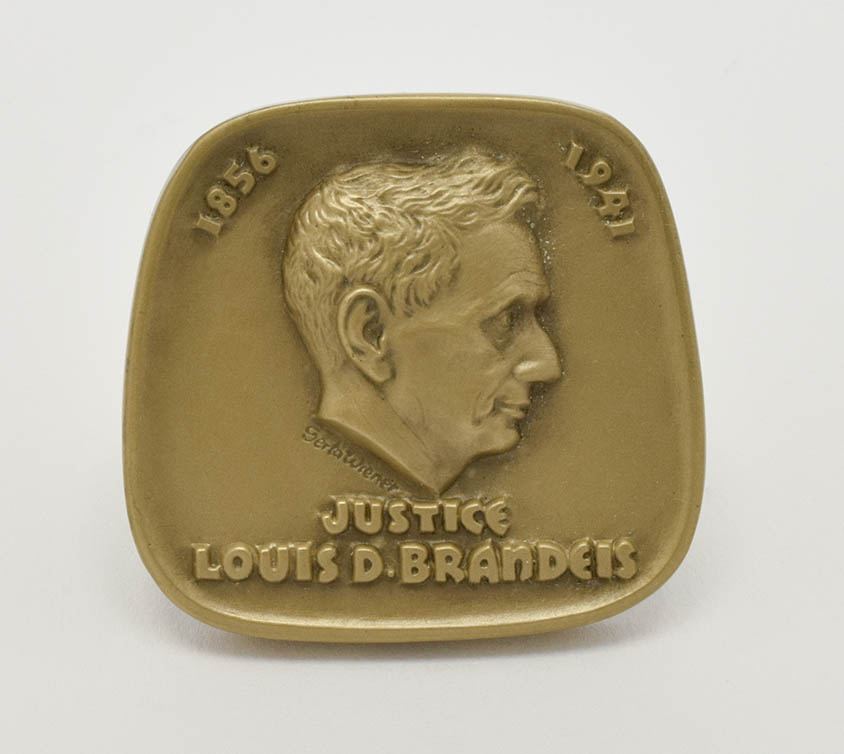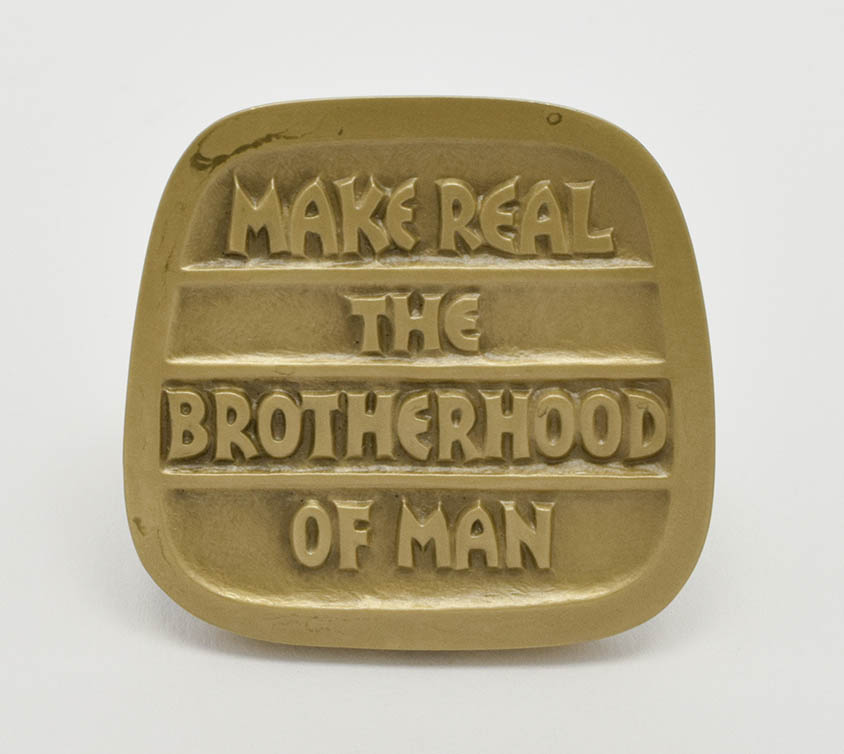Louis Brandeis (1856–1941)
Gerta Ries Wiener (Germany 1898-2000 New York)
USA, 1971
Bronze, h. 1 ¾ x w. 1 ¾ in.
Cincinnati Skirball Museum, Jewish-American Hall of Fame Collection, gift of Mel and Esther Wacks, Debra Wacks, and Shari Wacks, 2019.7.5
Born and raised in Louisville, Kentucky to Jewish immigrants from Bohemia, Louis Dembitz Brandeis graduated at the top of his class from Harvard Law School in 1877. After briefly working in St. Louis, he established a law practice in Boston with a Harvard classmate. Together, they wrote “The Right to Privacy,” an influential article in the Harvard Law Review. In Boston, Brandeis built a reputation as “The People’s Lawyer” by advocating for workers’ rights and combatting monopolies. In his 1914 book Other 19 People’s Money and How the Bankers Use It, Brandeis criticized the role of big banks and their ties to industry. Brandeis’s innovative use of sociological information and expert testimony in the 1908 case Muller v. Oregon came to be known as the “Brandeis Brief” and served as a model for other cases. In 1916, Brandeis was appointed to the United States Supreme Court by President Woodrow Wilson. Despite anti-Semitism and opposition from business interests, he was confirmed and became the first Jewish Supreme Court justice. During his years on the Supreme Court, Brandeis fought for free speech and individual liberties, and he was known for his dissenting opinions along with Oliver Wendell Holmes, Jr. Brandeis served on the bench for over 22 years before retiring in 1939. An active Zionist, he led the Provisional Executive Committee for Zionist Affairs from 1914 to 1918. Brandeis University in Waltham, Massachusetts is named for him, and the university’s Jewish history, social justice values, and liberal arts curriculum are a fitting testament to its namesake.


